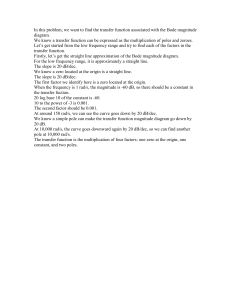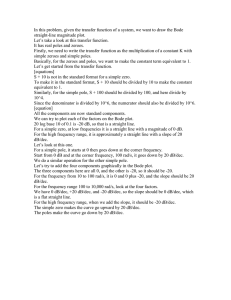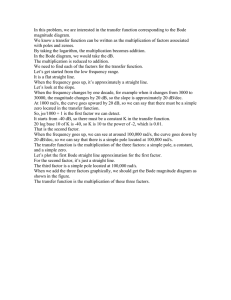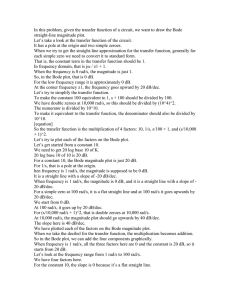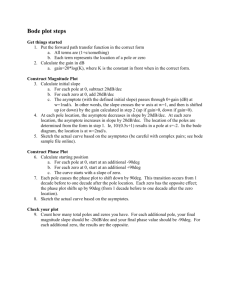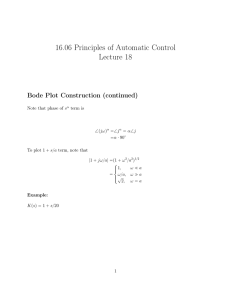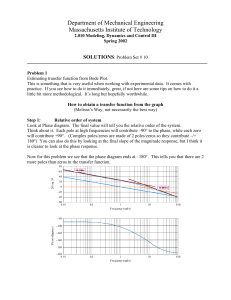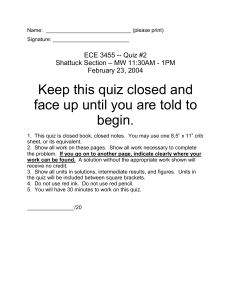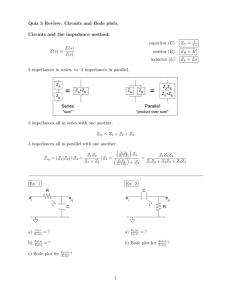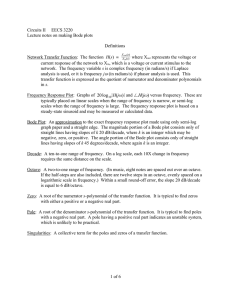In this problem, we know the transfer function for a... We want to get the Bode straight-line magnitude plot.
advertisement
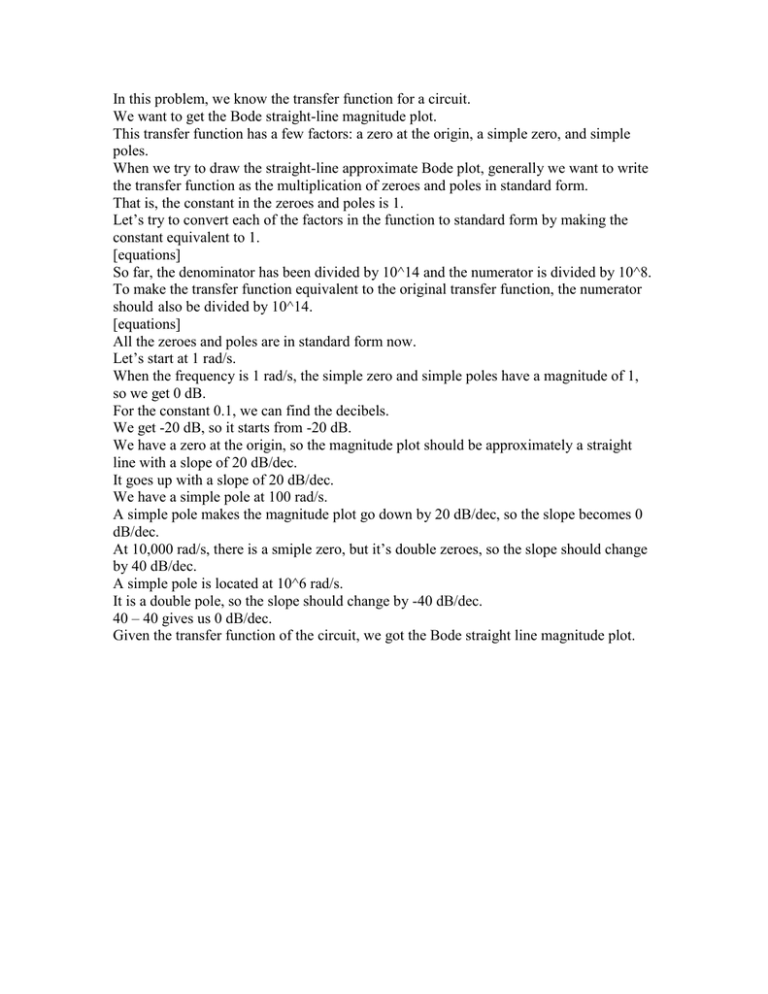
In this problem, we know the transfer function for a circuit. We want to get the Bode straight-line magnitude plot. This transfer function has a few factors: a zero at the origin, a simple zero, and simple poles. When we try to draw the straight-line approximate Bode plot, generally we want to write the transfer function as the multiplication of zeroes and poles in standard form. That is, the constant in the zeroes and poles is 1. Let’s try to convert each of the factors in the function to standard form by making the constant equivalent to 1. [equations] So far, the denominator has been divided by 10^14 and the numerator is divided by 10^8. To make the transfer function equivalent to the original transfer function, the numerator should also be divided by 10^14. [equations] All the zeroes and poles are in standard form now. Let’s start at 1 rad/s. When the frequency is 1 rad/s, the simple zero and simple poles have a magnitude of 1, so we get 0 dB. For the constant 0.1, we can find the decibels. We get -20 dB, so it starts from -20 dB. We have a zero at the origin, so the magnitude plot should be approximately a straight line with a slope of 20 dB/dec. It goes up with a slope of 20 dB/dec. We have a simple pole at 100 rad/s. A simple pole makes the magnitude plot go down by 20 dB/dec, so the slope becomes 0 dB/dec. At 10,000 rad/s, there is a smiple zero, but it’s double zeroes, so the slope should change by 40 dB/dec. A simple pole is located at 10^6 rad/s. It is a double pole, so the slope should change by -40 dB/dec. 40 – 40 gives us 0 dB/dec. Given the transfer function of the circuit, we got the Bode straight line magnitude plot.
